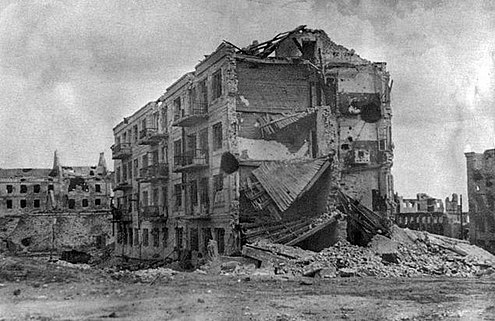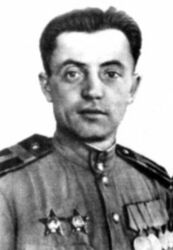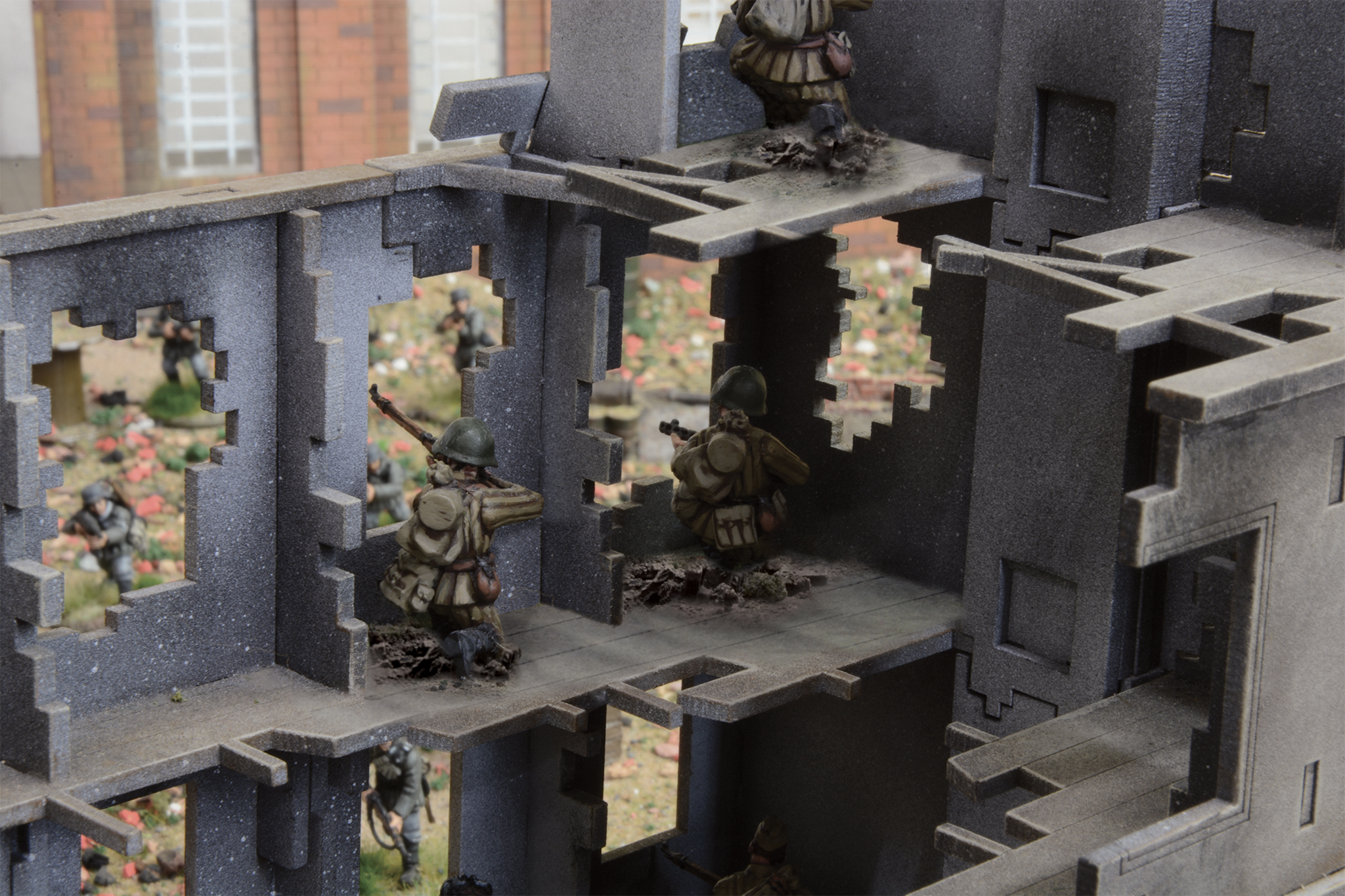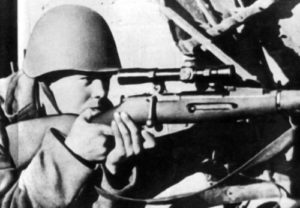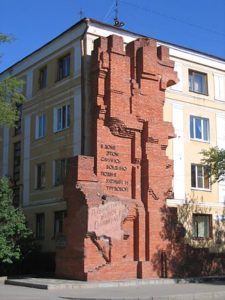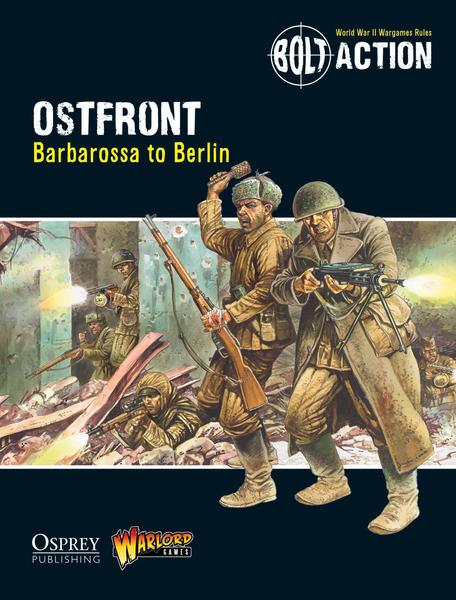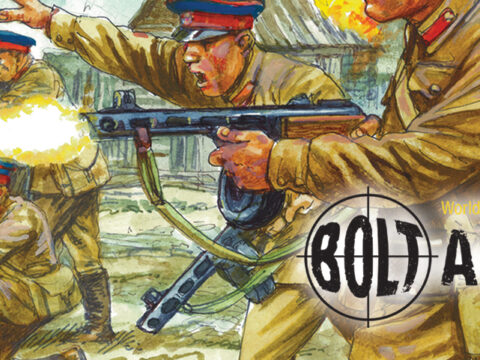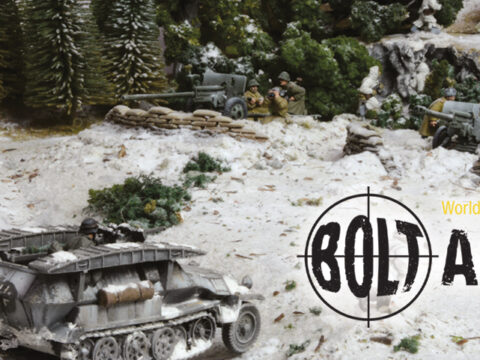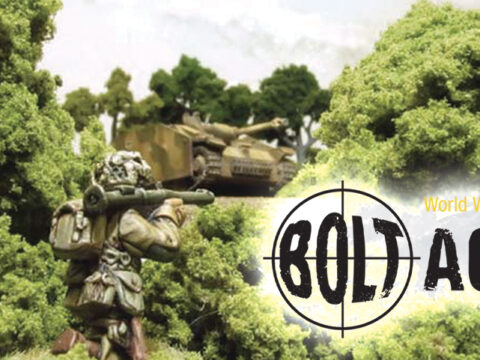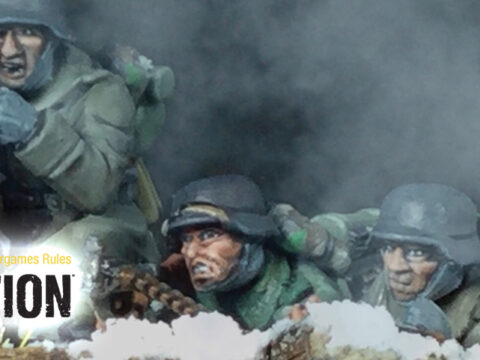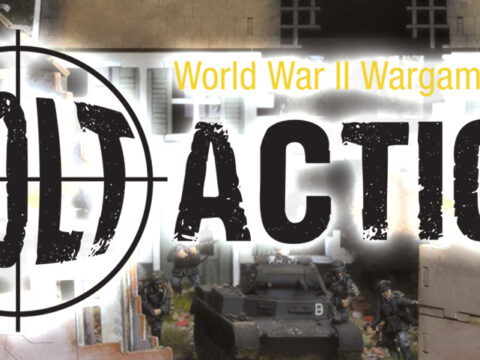Pavlov’s House was a site of key strategic importance during the Battle of Stalingrad; subject to fierce repeated assaults by the German invaders.
The siege of ‘Pavlov’s House’ is reputed to have lasted from 27 September to 25 November 1942. It became an almost mythological symbol of the staunch resistance of the Red Army to the fascist invaders, the resultant propaganda fuelling the morale of the Russians. Sergeant Yakov Pavlov’s (1917-1981) holding of the apartment block thus held a fantastic level of significance for Stalingrad as a whole. Pavlov and his men of the 13th Guard Rifle Division were able to hold onto the building for 2 months before being relieved by a counter-attacking Red Army.
The Building’s Capture
Sergeant Pavlov was forced to take command of his platoon after the death of both the Lieutenant and Senior Sergeant. Out of a platoon of originally 30 Guards, only 4 men remained, having been subject to a series of running battles around the outskirts of the apartment block. He ordered the 3 men left to him to follow him into the apartment block to clear it of any remaining Germans and hold it until further notice. By this point in the war, Stalin’s now-infamous Order No.227 was in effect. It was thus Pavlov’s duty to hold the apartment block regardless of any limitations and that it was better to die fighting the invading army than retreat (and risk execution for dereliction of duty). Pavlov and his remaining 3 Guards managed to hold the block by themselves (it is possible that German counterattacks were weak because they suspected a far larger occupying force) with limited machine guns and a single anti-tank rifle before being reinforced by 26 Guards who brought numerous machine guns, anti-tank rifles and mines. Four days after Pavlov’s reconnoitre operation, Lieutenant Ivan F. Afanasiev took command; bolstering the garrison and allowing the fortification of its defences.
“Not a step back!”
~Excerpt from Order No. 227 – Joseph Stalin, 28 July 1942
Key Positioning
In the chaos of street by street fighting that epitomised the Battle of Stalingrad, every building may as well have been a fortress. However, this apartment building had a significant strategic advantage over the control of the Ninth of January Square in the central part of the city. It also protruded out into the German lines. It held a clear view of up to a kilometre in three directions; north, south and east. It also acted as a last form of defence before the Volga being only 3 blocks away from its banks, helping to cover any Russian forces who were trying to cross the river.
With the arrival of new assets, Pavlov wasted no time in reinforcing the defences significantly. Machine guns were set up in every ‘murder hole’ (small breaks and holes in the apartment walls that gave very good defensive cover) that was available. A communications trench was also dug to allow for reinforcement, ammo and supplies to pass to the building.
To assault it, the German 6th army was forced into one of two nightmare routes. They either needed to cross the tremendously exposed Ninth of January Square or directly down a straight street. Both routes boasted multiple layers of mines, barbed wire and little to no cover (besides the wrecks of dead German tanks), and all the while any pressed into advancing would be hammered by machine-gun nests, sniper fire, anti-tank rifles from the apartment building and constant artillery fire from across the Volga.
Though the name Pavlov’s House was adopted after the battle, in wartime it was known as the Lighthouse, a fitting name for the fortress at the forefront of the Russian defensive line. The site was marked as a fortress on German maps, highlighting the significance placed on it from both sides.
The Defence
With the defences shored up and no shortage of supplies, the apartment block was able to hold out against daily, or sometimes even more frequent German assaults. The building had proved resilient to artillery fire and panzers had proved equally ineffective. Wave upon wave threw themselves into the hellmouth of firepower, barbed wire and mines. No attempt came close to dislodging the defenders. With Order No.227 firmly in the minds of Russian command no ground was given. Not a step back taken.
During the downtime between German attacks, Pavlov would personally lead sorties out into the square and the street to relay mines and clear German bodies off the barbed wire fences (lest they be used as cover by the next wave of German attackers).
Chekhov’s Gun
The Battle of Stalingrad was rife with snipers. The muddled and confused War of the Rats provided an unending shooting gallery of targets. There is evidence that shows that the famous sniper Anatoly Chekhov frequently visited Pavlov’s House during its occupancy, its roof providing an unparalleled overview of the square. In total, Chekhov is credited with up to 256 confirmed kills, many of which would appear to have taken place during the siege of Pavlov’s House.
German Panzers faced a particular problem. Their weapons were not proving effective at range and any attempt to keep at a distance left them vulnerable to enemy artillery fire. However, if they managed to draw in close, they were not able to elevate their weapons to fire on the upper floors of the four-story building. Pavlov developed an effective tactic to destroy the enemy armour. He would wait for them to advance within 25 yards of the apartment block before ordering the PTRS-41 anti-tank rifles to fire down onto the Panzers’ turrets from the relative safety of the building’s roof. These rifles were easily capable of penetrating the thin armour on the turret’s roof. Pavlov is credited with singlehandedly knocking out 12 tanks over the 2-month period of the battle using this method.
Siege’s End
Eventually, after 2 months of constant fighting, the German forces surrounding the apartment block had worn themselves thin so severely that they became vulnerable. A counterattacking Russian Army pushed them back and relieved Pavlov and his men on the 25 November 1942. Vasily Chikov, general of the Russian Army in Stalingrad, was reported to have joked that the German Army lost more men trying to capture ‘Pavlov’s House’ than it did when capturing Paris. After the Battle of Stalingrad, Sergeant Yakov Pavlov was awarded the Hero of the Soviet Union, the Order of Lenin, the Order of the October Revolution, two Orders of the Red Star as well as many other lesser medals for his efforts.
The four-storey house that bore his name was rebuilt and serves as an apartment building to this day. A memorial there is built of bricks recovered from the east side of the building.
Look out for the Bolt Action: Stalingrad Campaign book in 2020!
Ostfront
Take charge of Operation Barbarossa and drive towards Moscow or command the steadfast defenders of the Soviet Union. From the early battles for Leningrad and Sevastopol to the tank clash of Kursk and the bitter urban warfare of Stalingrad, this ] Theatre Book for Bolt Action provides wargamers with scenarios and special rules that give them everything they need to focus their gaming on the Eastern Front.


